Starting a saltwater aquarium is an exciting venture, but one of the most challenging parts for aquarists—whether beginners or seasoned hobbyists—is selecting and stocking fish. With so many options available, it’s easy to fall into traps that could have been avoided with the right guidance. This guide will help you make thoughtful choices, build a harmonious tank, and avoid common pitfalls.
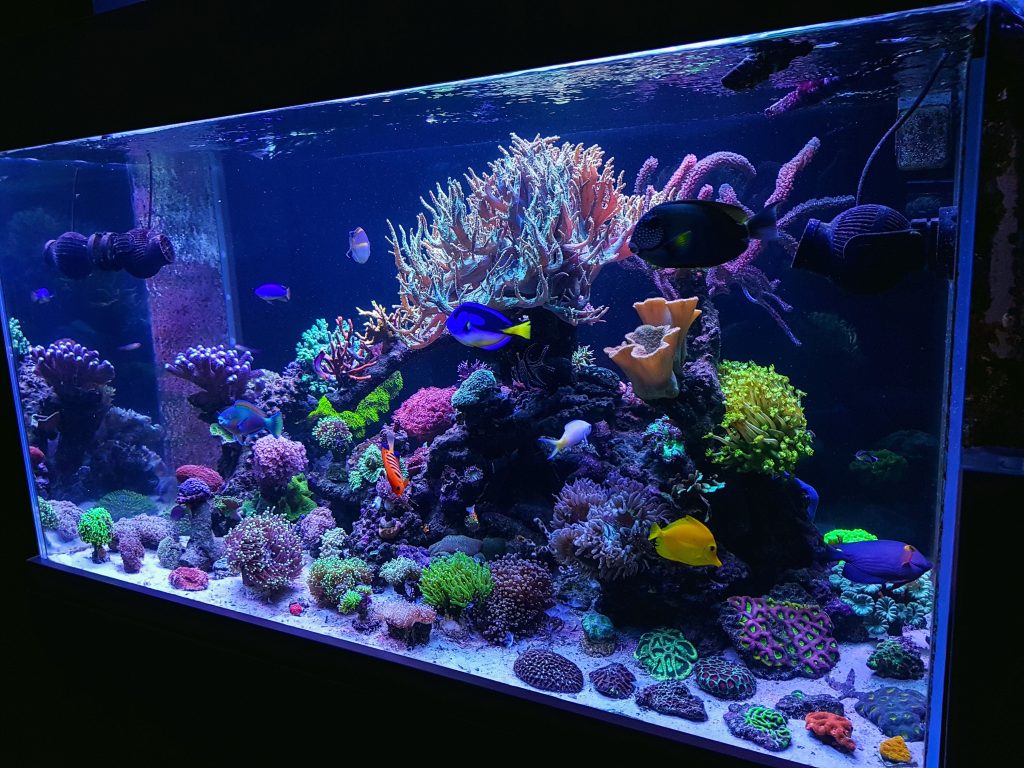
A thriving reef tank showcasing vibrant coral formations and a variety of colorful fish, creating a mesmerizing underwater ecosystem. Photo: Reefland
Building a Balanced Community: The Basics
Every aquarium is as unique as its owner, and the fish you choose play a crucial role in its success. Before selecting fish, consider these factors:
- Your Experience Level: Are you a beginner, or do you have years of experience managing marine tanks?
- Tank Size: Smaller tanks limit your options, while larger tanks provide more flexibility.
- Tank Type: Is it a fish-only setup, a reef tank with coral, or something in between?
- Feeding Habits: Can you commit to specific feeding schedules and dietary needs?
- Budget: High-quality, ethically sourced fish often cost more but are worth the investment.
Every factor matters. For example, stocking a small tank with large or aggressive fish often leads to territorial disputes, stress, and health problems. Similarly, neglecting a tank’s filtration capacity can jeopardize even the hardiest species.
Pro Tip: Research is your best friend. Dive deep into understanding the needs of each species before bringing them home.
Avoiding the “Impulse Buy”
A dazzling, colorful fish may catch your eye in the store, but appearances can be deceiving. It’s tempting to add fish without much thought, but poor compatibility or inappropriate environmental conditions can lead to stress, aggression, or even death. Patience and planning are the pillars of a successful tank.
When asking if two species can cohabitate, listen carefully to those who say “no.” Often, the “yes” answers come from isolated success stories, not reliable norms. Successful reef tanks require a harmonious balance, and impulsive choices can throw that balance off before you even realize it.
Suggested Product: Mesh tank covers to prevent jumpers while maintaining light flow. Perfect for safeguarding your tank from escapes.
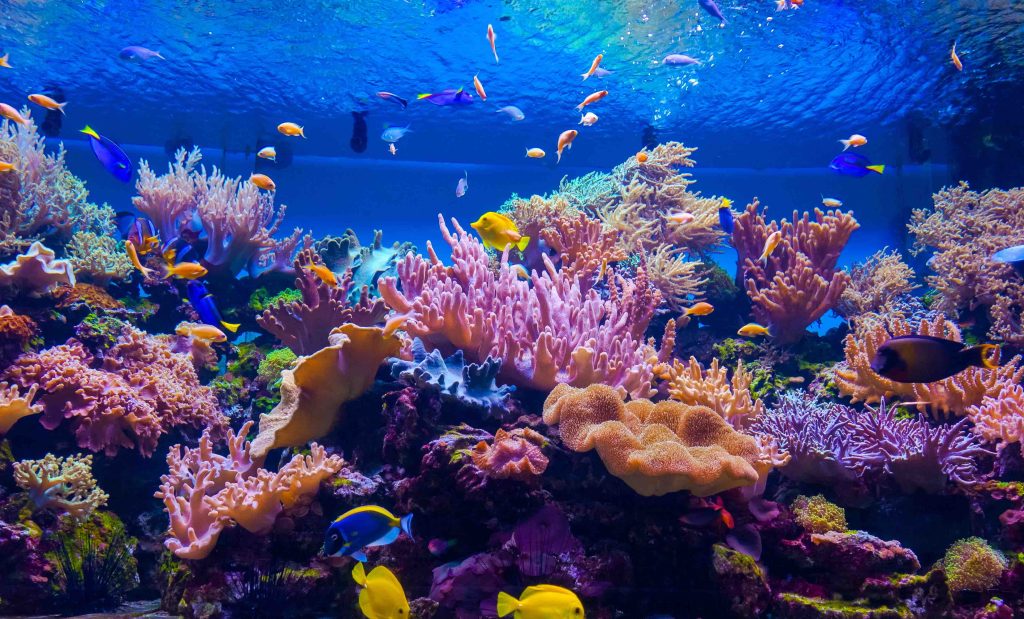
A dynamic reef tank displaying schools of vibrant chromis and tangs swimming gracefully among intricate coral structures. Photo: Akvarijum Studio ReefrooM
Wild-Caught vs. Captive-Bred: Making Ethical Choices
Unfortunately, the majority of saltwater fish available in the hobby are wild-caught. While some thrive in captivity, others suffer from stress, parasites, or difficulty adapting to tank life. The reality of the trade can be harsh: nearly half of all wild-caught fish perish before reaching their final destination.
Captive-bred fish offer a range of advantages:
- They are hardier and better adapted to life in an aquarium.
- They don’t contribute to the depletion of wild populations.
- They support sustainable practices in the aquarium trade.
However, the availability of captive-bred species is still limited compared to demand. For example, clownfish are widely bred in captivity, while many other species rely on wild-caught specimens due to breeding challenges.
Opting for captive-bred fish is a small but impactful step toward sustainability. These fish are hardier, more accustomed to aquarium conditions, and don’t contribute to declining wild populations. Ask your local store about captive-bred options and express your interest; demand often drives supply.
Suggested Product: Captive-bred clownfish for a hardy, vibrant, and ethical choice. Ideal for beginners and advanced aquarists alike.
Supplier Matters: Where Your Fish Come From
Not all fish suppliers are created equal. While some prioritize ethical capture methods and health monitoring, others focus solely on minimizing costs. The difference is stark: fish from high-quality suppliers are more likely to thrive, whereas poorly sourced specimens often struggle or perish.
Here’s what to ask your local store:
- Does the supplier use hand-netting methods rather than destructive practices like cyanide?
- Are the fish held for observation before being shipped to ensure their health?
Reputable suppliers pay local divers fair wages for humane, sustainable collection methods. They also quarantine and monitor fish before shipment, improving survival rates dramatically. These extra steps are reflected in the price, but they’re worth it for the well-being of your tank inhabitants.
Investing in fish from reputable suppliers might cost more upfront but saves you money and heartache in the long run. High-quality suppliers help ensure your tank’s success while promoting better practices within the industry.
Suggested Product: Quarantine tanks for acclimating new arrivals before introducing them to your main aquarium.
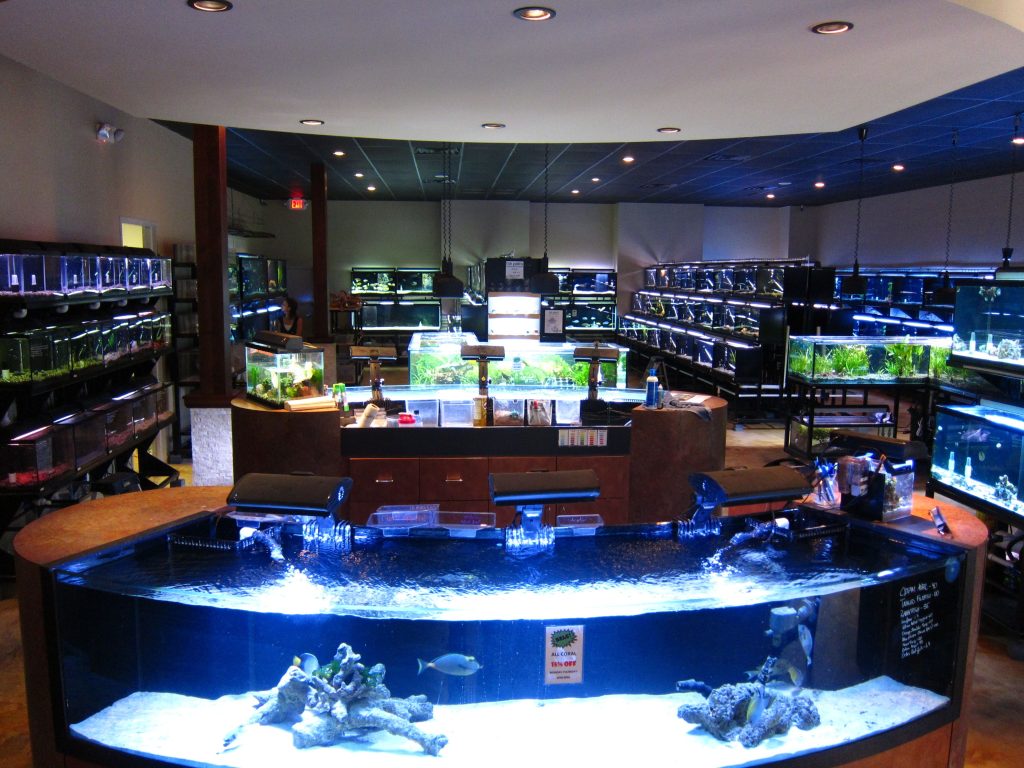
An impressive saltwater aquarium shop with rows of vibrant tanks showcasing a wide variety of marine fish and corals in a clean, organized layout. Photo: Ocean Floor Aquariums
The Right Order Matters
Adding fish in the right order can make a world of difference in tank dynamics. Start with the least aggressive species to allow them time to establish territories. More territorial fish, like clownfish or tangs, should be introduced later.
Ideal First Additions:
- Firefish
- Royal gramma
- Tailspot blenny
Aggressive Fish to Add Last:
- Clownfish
- Certain tangs
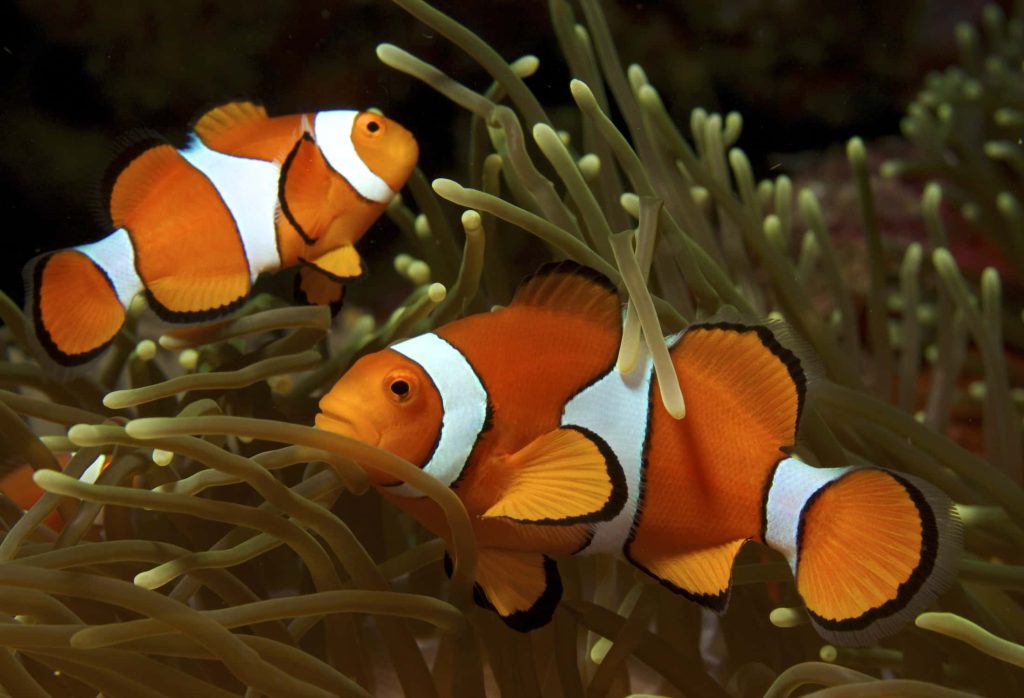
A vibrant clownfish nestled among the protective tentacles of a sea anemone, showcasing the symbiotic relationship between the two species. Photo: David J. Hall
Adding fish thoughtfully prevents unnecessary stress and conflicts. Consider your tank’s layout, hiding spaces, and overall balance when planning introductions.
Suggested Product: Quality tank dividers to separate territorial fish during acclimation.
Fish to Avoid: The Case Against Damsels
Damsels may appear appealing due to their hardiness and vibrant colors, but their aggression often turns tanks into battlegrounds. Even less aggressive species, like the azure damsel, can dominate tankmates over time. Save yourself the frustration and skip damsels unless you’re stocking a predator tank.
Better Alternatives: Hardy, Peaceful Choices
If you’re looking for vibrant, active fish that won’t terrorize their tankmates, consider these options:
- Pajama Cardinals: Peaceful, hardy, and perfect for community tanks.
- Green Chromis: Great for schooling, though long-term health can be a concern without careful sourcing.
- Lawnmower Blennies: Algae-eating workhorses that thrive in smaller setups.
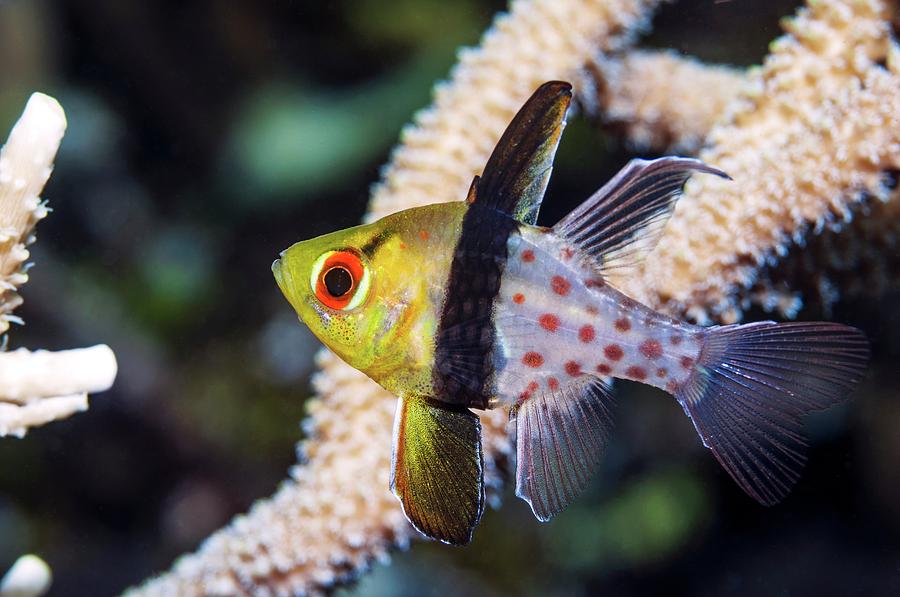
A vibrant Pajama Cardinal (Sphaeramia nematoptera) gracefully swimming among coral branches, showcasing its distinctive spotted pattern and striking coloration. Photo: Georgette Douwma
These fish balance beauty and functionality, making them excellent choices for community tanks. Ensure proper acclimation to maximize their chances of success.
Suggested Product: High-quality algae wafers to support herbivorous fish like blennies and tangs.
Maintenance Fish: Helpers for a Balanced Ecosystem
Every tank benefits from a few utility players:
- Kole Tangs: Excellent algae controllers for medium to large tanks.
- Yellow Coris Wrasse: Bright, active, and adept at pest control.
- Diamond Gobies: Keep sand beds clean and aerated.
These species don’t just add beauty; they contribute to the overall health and balance of your aquarium. Their roles as cleaners and pest controllers make them invaluable.
Reef-Safe Choices: Why “Sometimes Safe” Isn’t Safe
The term “sometimes reef-safe” should be a red flag. Species like flame angels or coral beauties may behave in one tank but wreak havoc in another. Avoid the gamble and stick to fish with proven track records in reef environments.
Suggested Product: Reef-safe fish guidebooks for confident stocking decisions.
Safeguarding Your Tank
An open-top tank may look sleek, but it’s a disaster waiting to happen. Many species, even those not known for jumping, can leap to their demise if startled. A mesh cover preserves aesthetics while preventing accidents. Think of it as life insurance for your aquatic pets.
Suggested Stocklist for a 75-Gallon Tank
For a vibrant and balanced community, consider this lineup:
- Royal Gramma
- Tailspot Blenny
- Firefish
- Pajama Cardinal
- Green Chromis
- Lawnmower Blenny
- Green Clown Goby
- Yellow Coris Wrasse
- Diamond Goby
- Kole Tang
- Pair of Clownfish (ocellaris or percula)
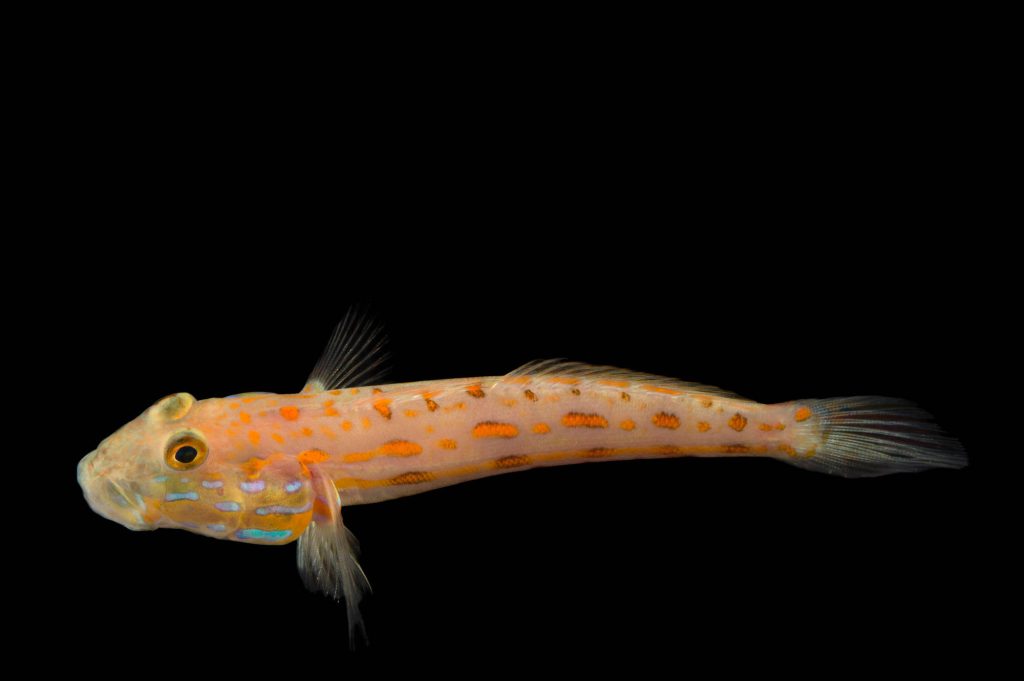
A detailed portrait of a Diamond Watchman Goby (Valenciennea puellaris), highlighting its distinctive orange spots and elongated body against a black background. Photo: Joel Sartore
Each species brings unique traits and functions to the ecosystem. Ensure you have adequate space, filtration, and feeding strategies before adding fish to your tank.
Picking Healthy Fish: What to Look For
When selecting fish at the store, patience is key. Observe their behavior and physical condition:
- Activity: Look for fish that swim confidently.
- Alertness: Clear eyes and erect fins are signs of health.
- Feeding Response: Ask to see the fish eat before purchasing. A healthy appetite is a strong indicator of adaptability.
Avoid fish with visible blemishes, erratic breathing, or signs of stress. A little diligence now can save you headaches later.
